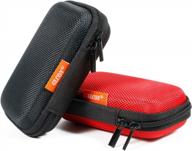
Review on Canon EF 50mm f/1.4 USM lens, black by Petar Hristov ᠌

I am satisfied, the product fully corresponds to the description.
The opinions of various users regarding the accuracy of the focusing varied substantially in this case; I think the lens gets along with various corpses in various ways. I used it with crop 1.6 (a 550D), therefore I can give it 4 out of 5 stars in this area. In summarizing the advantages and disadvantages, I can state that this is a good portrait lens on a crop (comfortable as a bust, not so much as a full-height). This lens may already be used for both portraits and landscapes on a full frame camera. The Sigma AF 50mm f/1.4 EX DG HSM, which costs a few thousand dollars more than the alternative, includes the following features: 1) Internal attention. 2) It statistically gets better reviews on Amazon for sharpness than the Canon EF 50 f/1.4 USM. Additionally, you can compare here:. Lens=115; Camera=453; Sample: 0; FLI: 0; API: 0; LensComp: 473; CameraComp: 0; FLIComp: 0; APIComp: 0 (3) A hood is included. 4) The physical aperture is bigger (the filter thread's diameter is 77 mm). 5) The canon contains 8 blades in addition to the 9 aperture blades. Therefore, the blur ought to be much more lovely. In contrast, Canon has one potential advantage over Sigma because there are two aspherical components, as opposed to one.
- I'll try to provide a succinct but thorough analysis of the factors that can influence your decision. the benefits are as follows: 1) Excellent color reproduction, halftones, and extremely colorful images are all advantages of zoom lenses (only Elks can compete, but they also cost more). 2) A good number of aperture blades produce the proper, "round" blur; Photoshop cannot duplicate this, and we pay for it. 3) Aperture starting at f/1.4 offers a wide range of bokeh, making it feasible, for example, to blur the backdrop even when it is nearby. 4) When compared to other focal lengths, a person's field of vision at 50mm of focus at full frame results in images that are the most naturally perceived. 5) The least expensive light filters are those that are under 58 mm. 6) Decorates the subject of portraiture—due to the image's softness, human skin appears more delicate in both color and texture, which lessens flaws. 7) Chromatic aberrations for this lens's aperture values are actually quite mild, they don't always pop out (it all depends on the light's incidence angle), and they occasionally work as an aesthetic impact. You can therefore give this point a +1. As a consequence, we receive one of the best portraits for the lowest cost that is still of professional caliber.
- There are further drawbacks: 1) External focusing (the focusing unit leaves, the so-called "trunk") makes the lens more susceptible to moisture and dust than lenses with internal focusing (for example, the same Canon EF 28 f/1.8 USM - internal), and it also likely has a negative impact on the problem with geometric aberrations. 2) For general photography, such as sharp landscapes and macro shots, the sharpness that is ideal for portraits (not too low to make it "soapy" and not too high to avoid dignity No. 6) becomes insufficient. Here, it's important to make it clear that we're not talking about sharpness at a wide aperture, but rather geometric aberrations. For instance, a picture of the Moon taken with a kit lens like the Canon EF-S 18-55 f/3.5-5.6 IS at f/5.6 aperture at 50 mm FR is sharper than a picture taken with this fifty kopeck at f/10 aperture. Additionally, this lens is not as crisp as, for instance, the Canon EF 28 f/1.8 USM. 3) Although it is not supplied, a lens hood is quite helpful for protection and anti-glare purposes. 4) The physical aperture is still small, even smaller than the thread diameter for 58 mm filters (not to be confused with the aperture due to the aperture value), which has an adverse effect on the image quality when shooting in challenging conditions and displaying at 100% scale on high-megapixel matrices. Additionally, more light is gathered and optical resolution is improved with larger diameter glasses. Its flaws make it less effective as a universal lens (apart from the obvious lack of a full lens hood).
New products
Comments (0)
Top products in 📷 Camera & Photo Accessories
Another interesting products

Protect Your Earbuds On-The-Go With Small And Portable EVA Case - Perfect For Airpods, USB Drives, Cables And More!

34 Review

A Durable And Protective CaseSack For Bose QuietComfort And SoundLink Headphones

41 Review

Black Leather Headphone Stand: Universal Headset Holder For Gaming And More - SAMDI Product

42 Review

Protective Silicone Cover For Samsung Galaxy Buds & Buds+, Shock Resistant With Carabiner And Fast Wireless Charging Compatibility - Fironst Case For Galaxy Earbuds 2020 (Black)

52 Review





